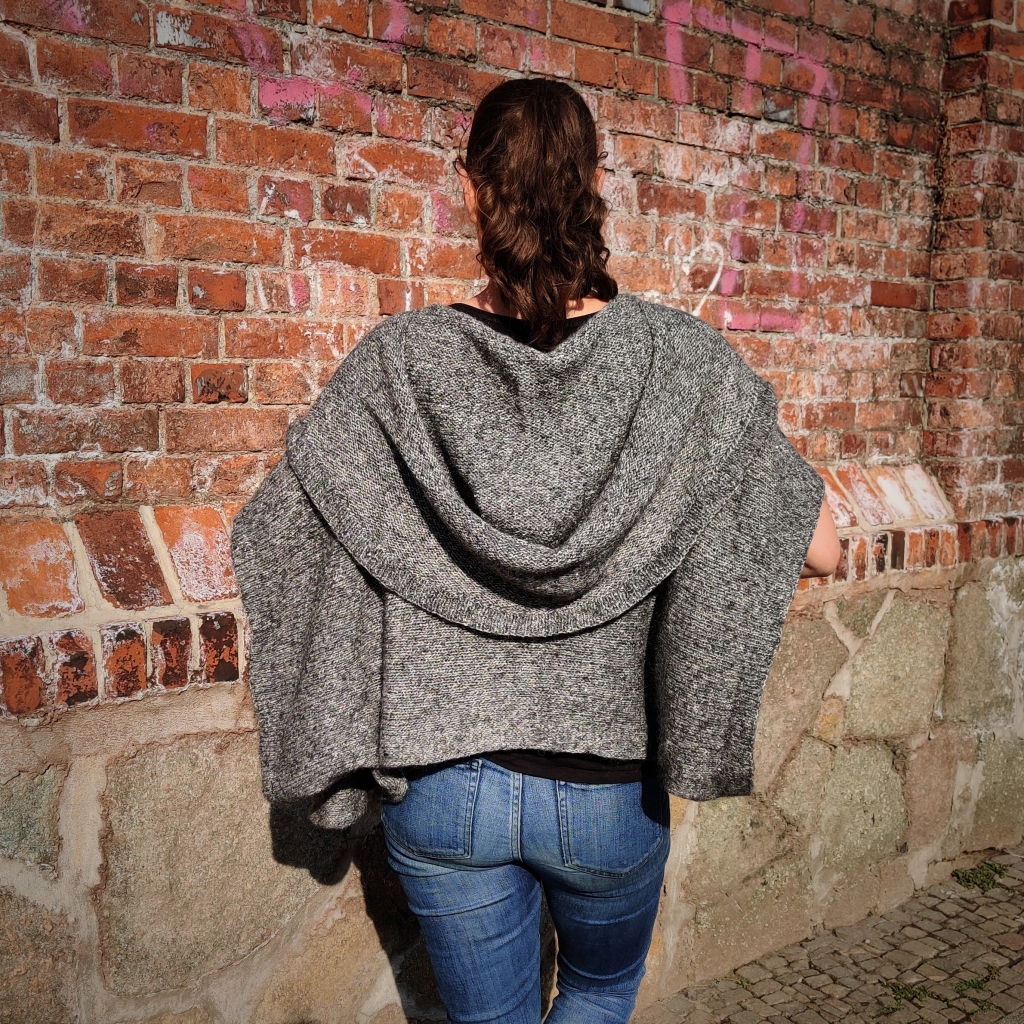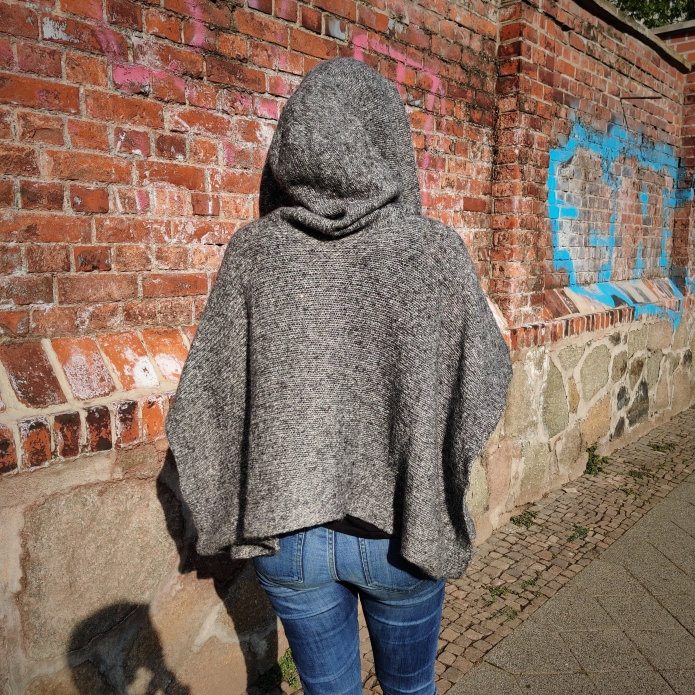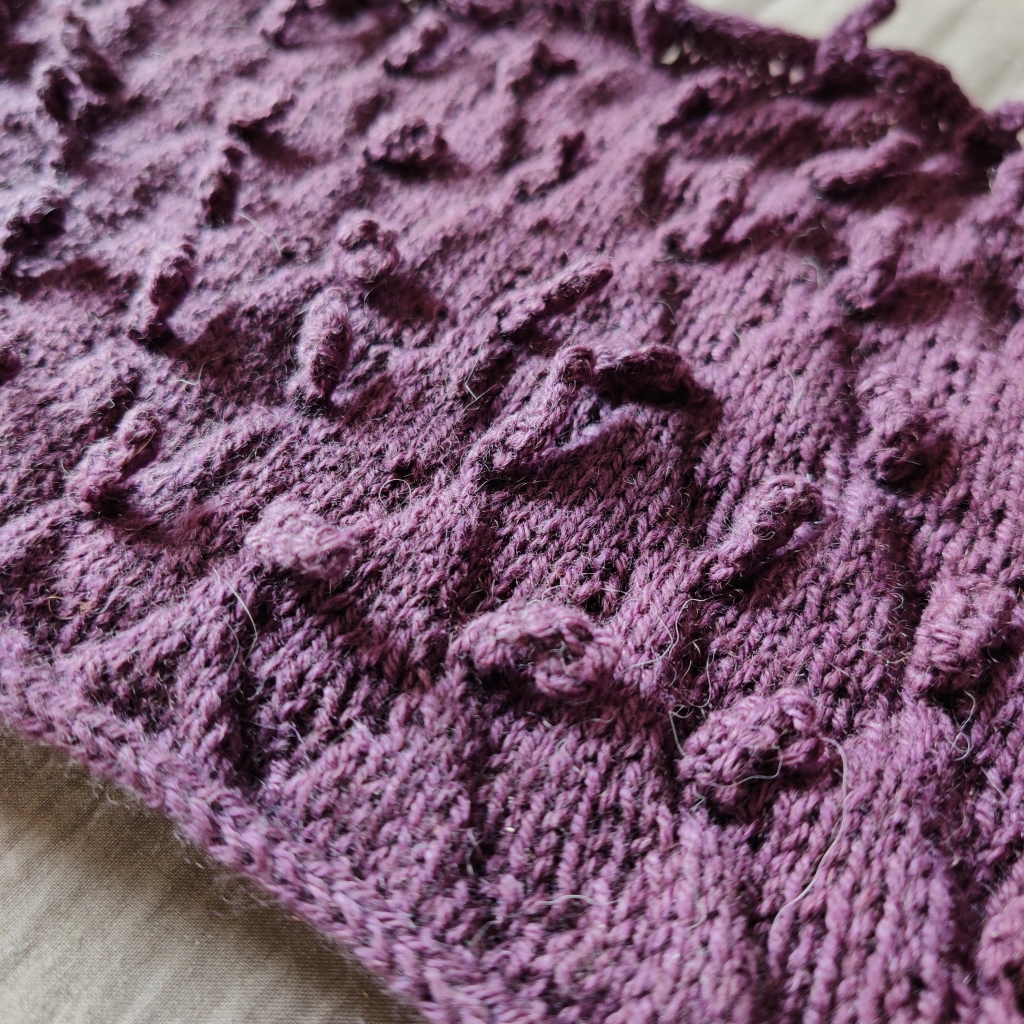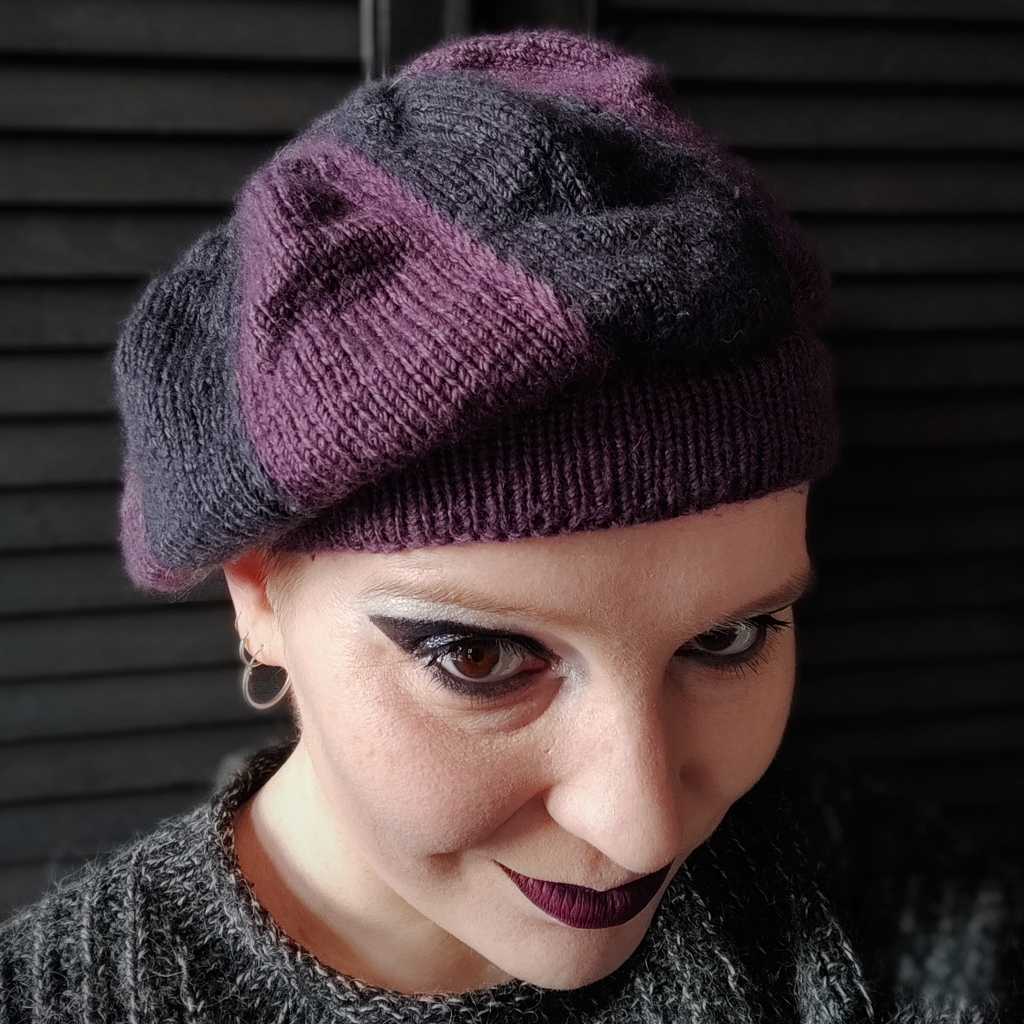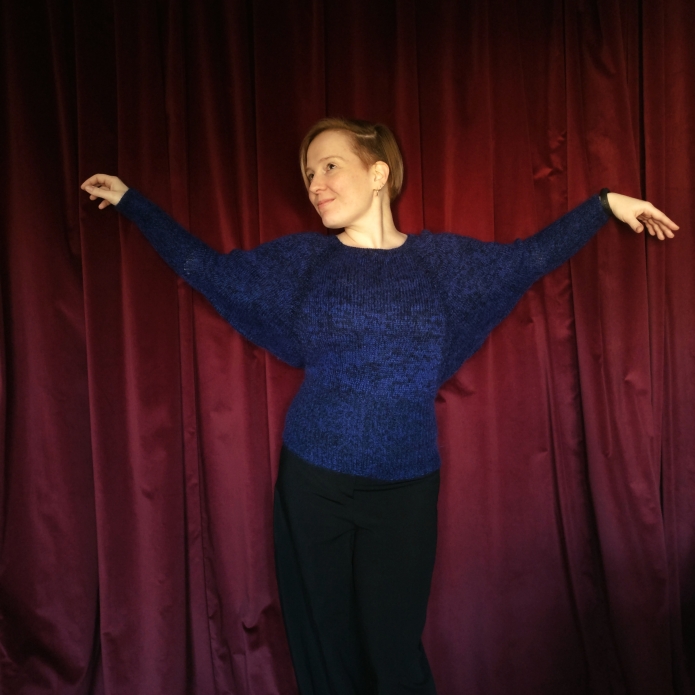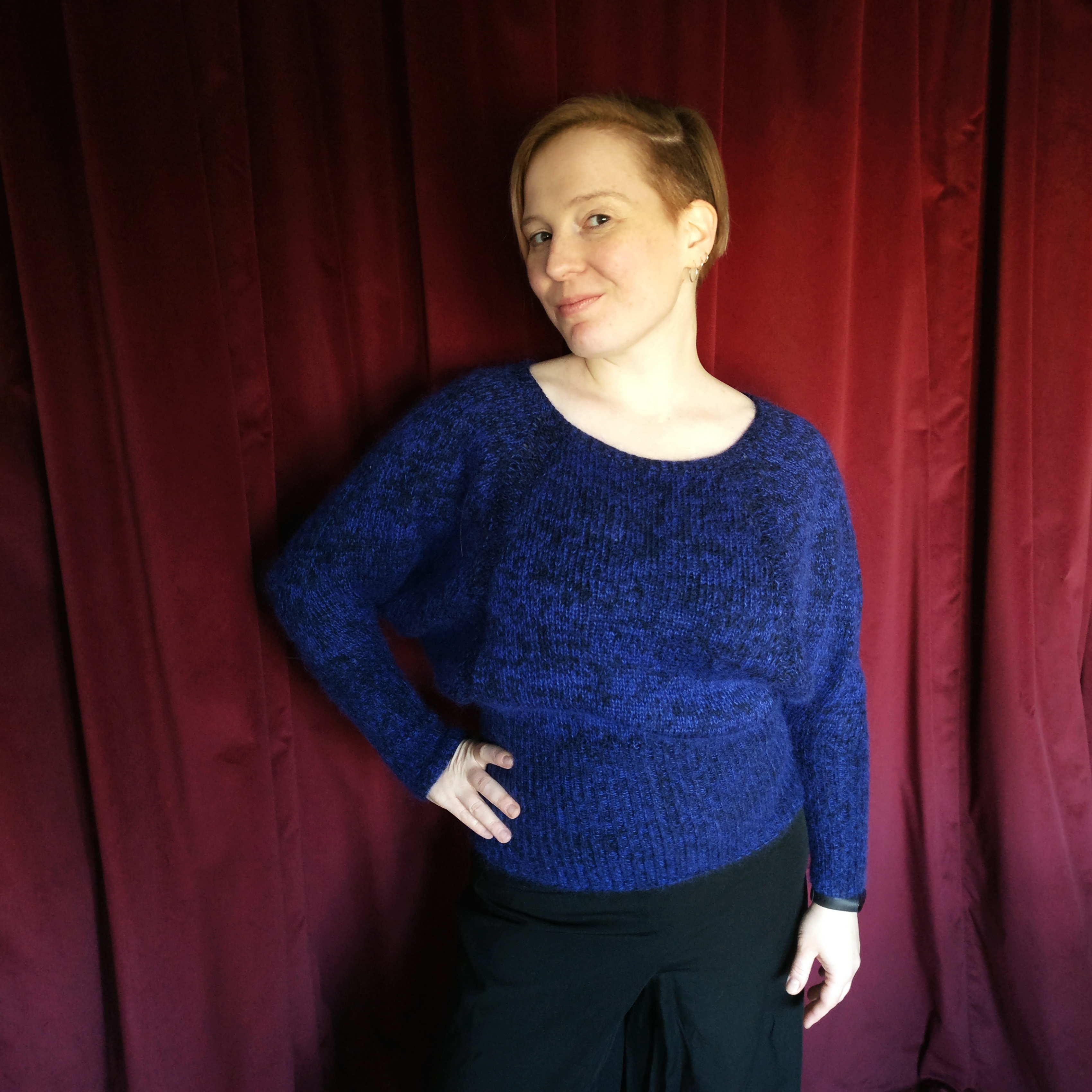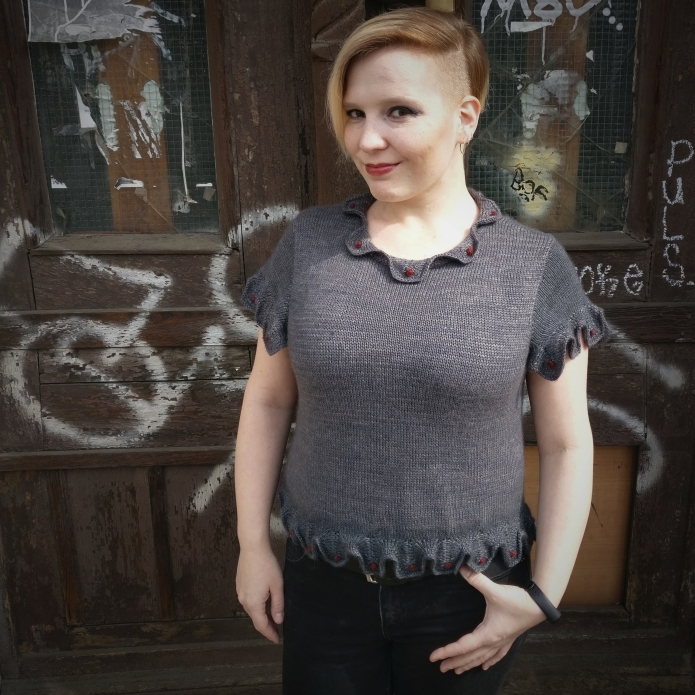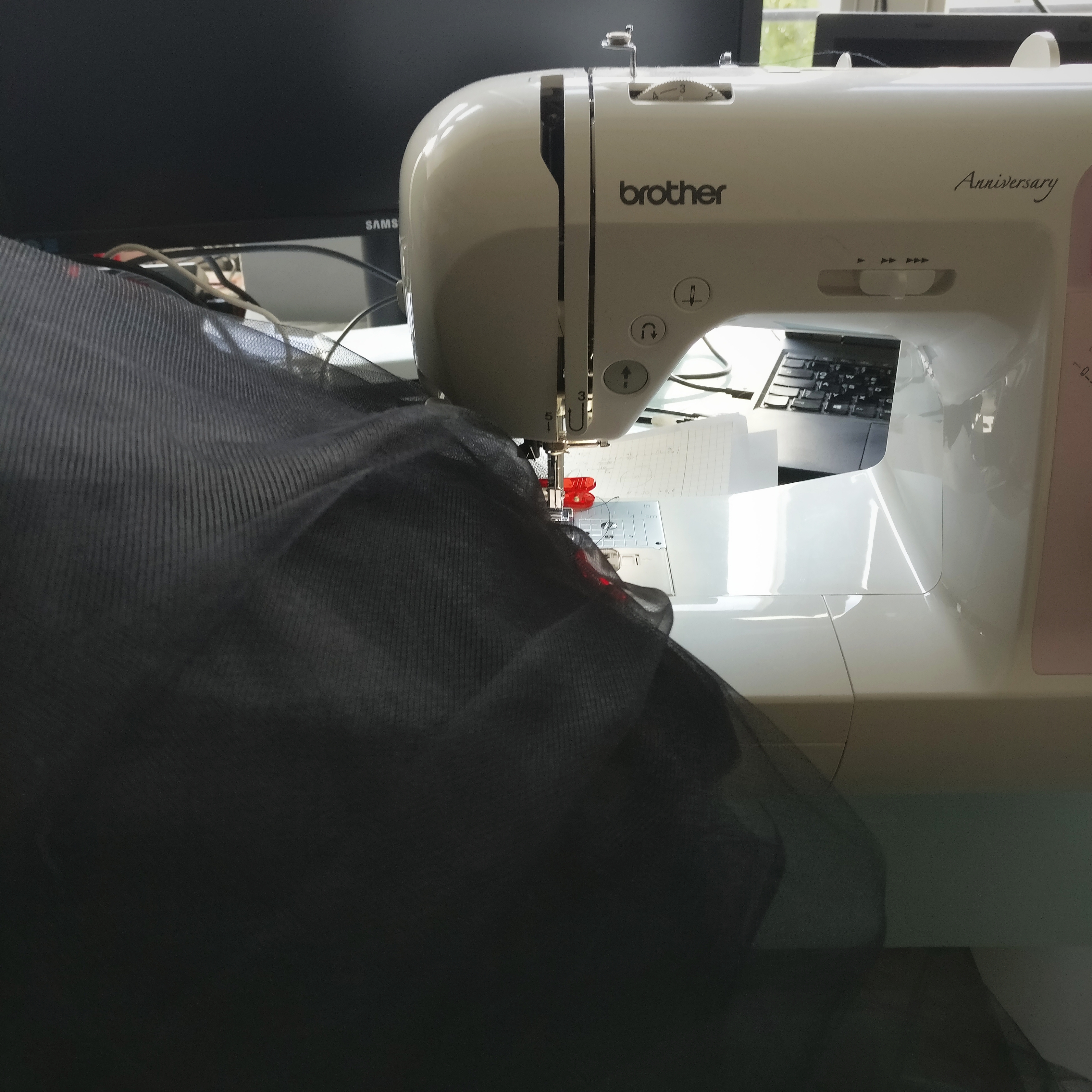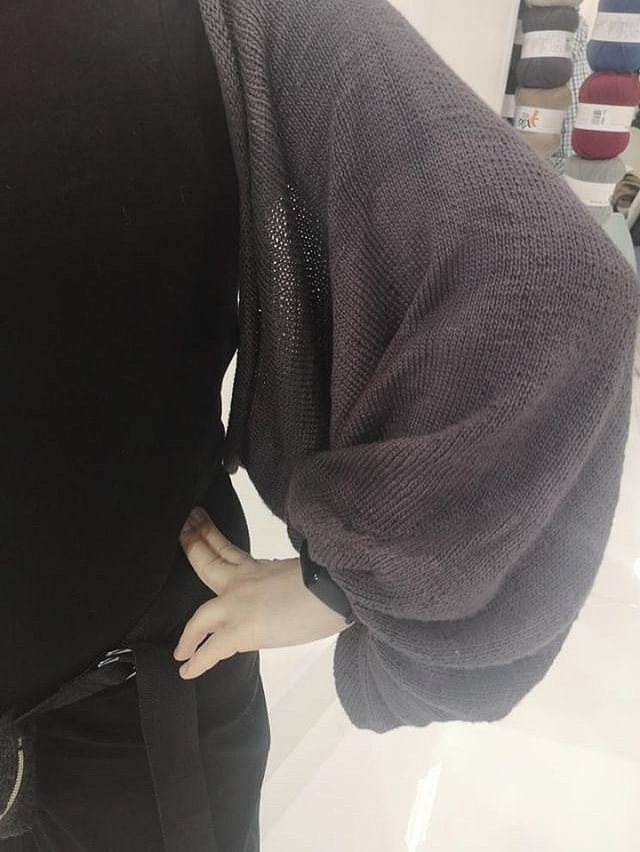Twilight started as a thought experiment on an unusual, but versatile layering piece. I was looking for something more interesting than a classic cardigan, but definitely more warming than a classic shrug or bolero. I finally opted for a unisex shape with an extra large hood and doomy vibes. This oversized, open front cardigan with exaggerated, elbow length sleeves is knit sideways in one piece. It has folded hems on all edges to keep the details simple due to the dramatic shape of the garment. You can wear it on top of simple a dress, to add that special something to an everyday jeans and t-shirt look or style it with other statement pieces in your own unique way.

My sample is knit in Austermann Alpaca Star (Ravelry link), a surprisingly decent, sequined, fluffy yarn. The composition is 36% alpaca, 35% nylon, 15% silk and 14% cotton. The sequins are really tiny and add just a bit of sparkle in direct sunlight. Of course, you can easily substitute this yarn with a worsted weight yarn or 2-3 strands of a lace weight mohair and silk blend of your choice that meets gauge.
Due to the garment’s construction, the pattern is available in a limited number of sizes only, ranging from an intended bust size of 32” to 50”. I am really sorry for this, I promise to think about possible construction issues earlier next time.
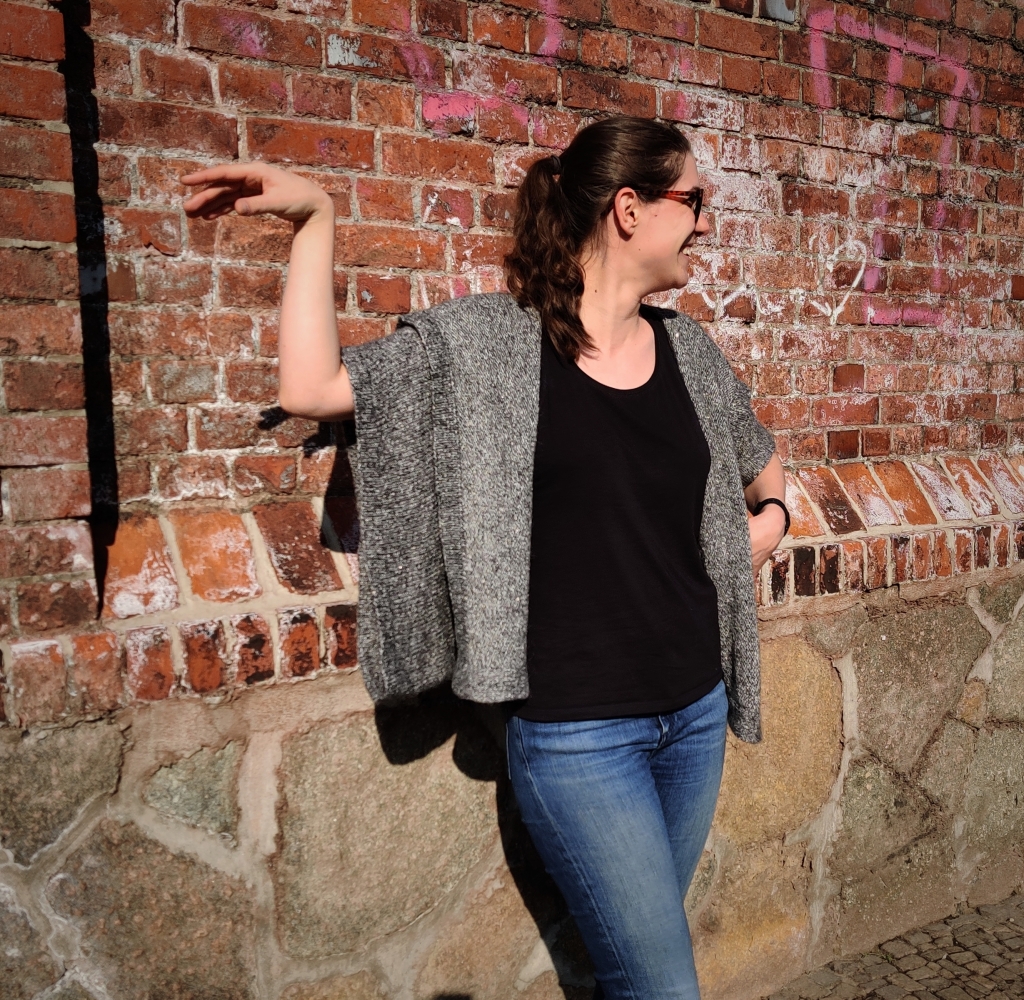
How to Get the Pattern
You can buy the pattern in my Ravelry store and on payhip. For more pictures, check #twilightcardigan on Instagram to see the stunning garments of my gorgeous testers! Enjoy the pattern, I’m looking forward to your interpretations!
